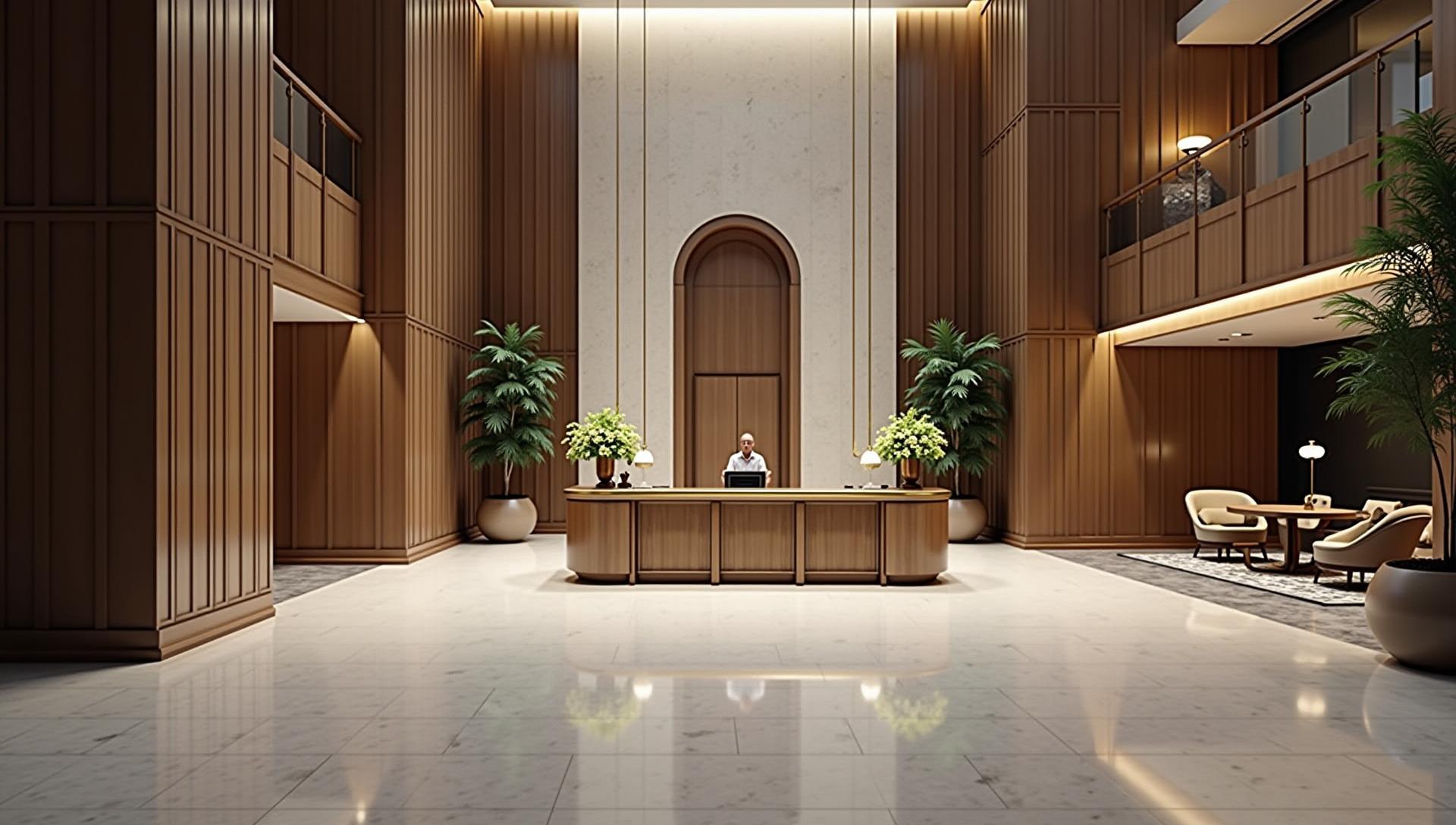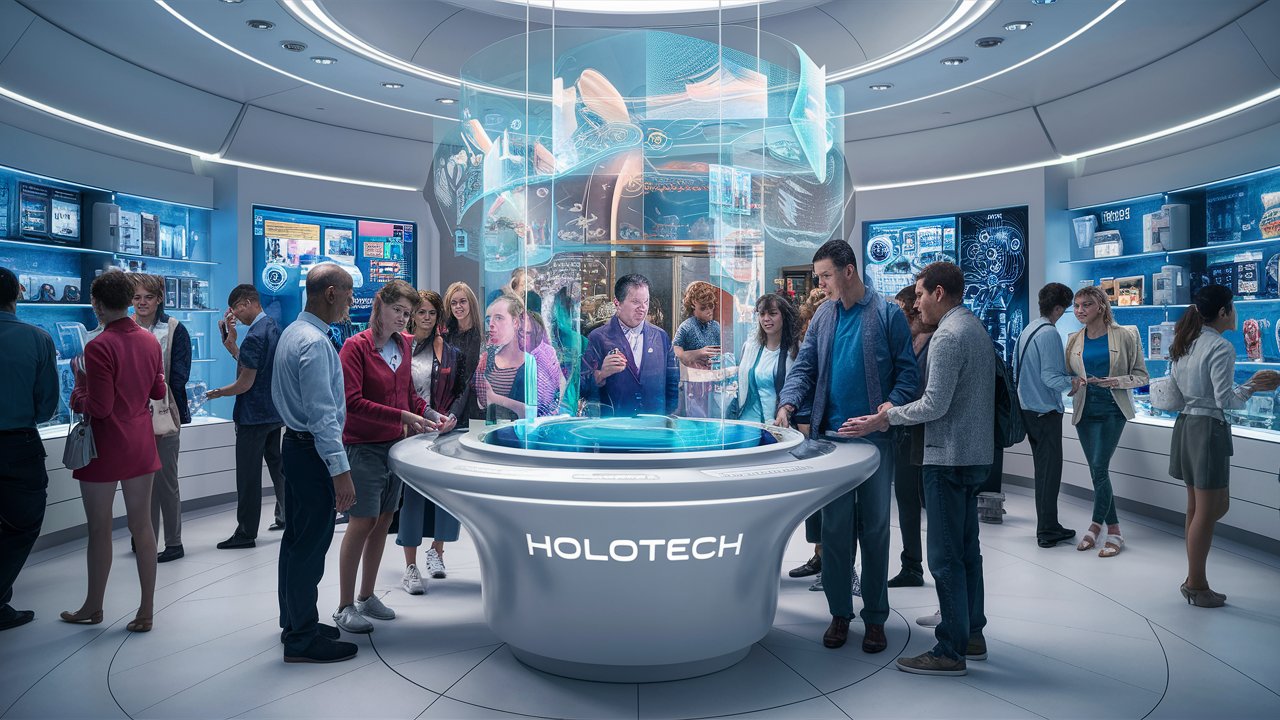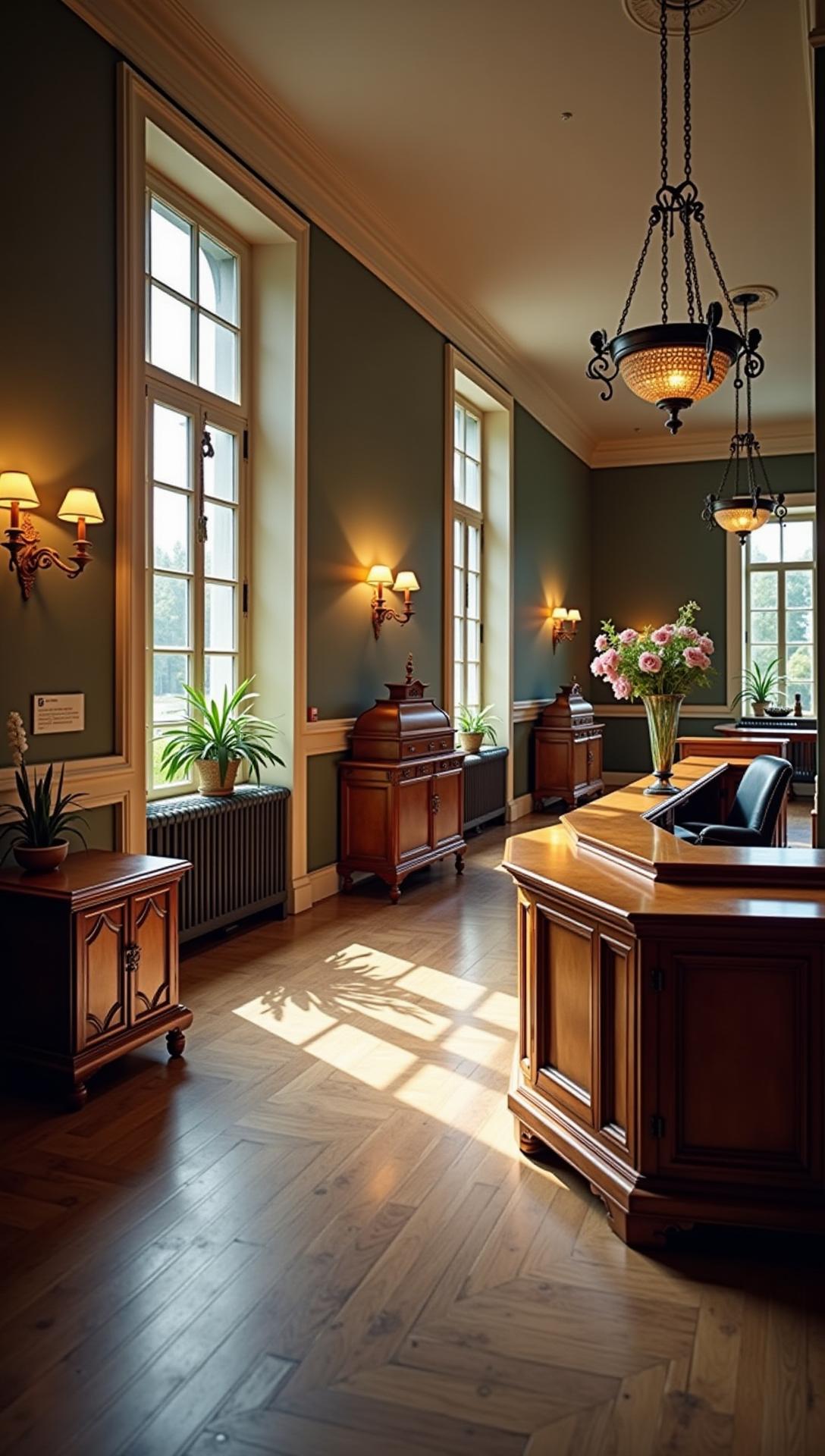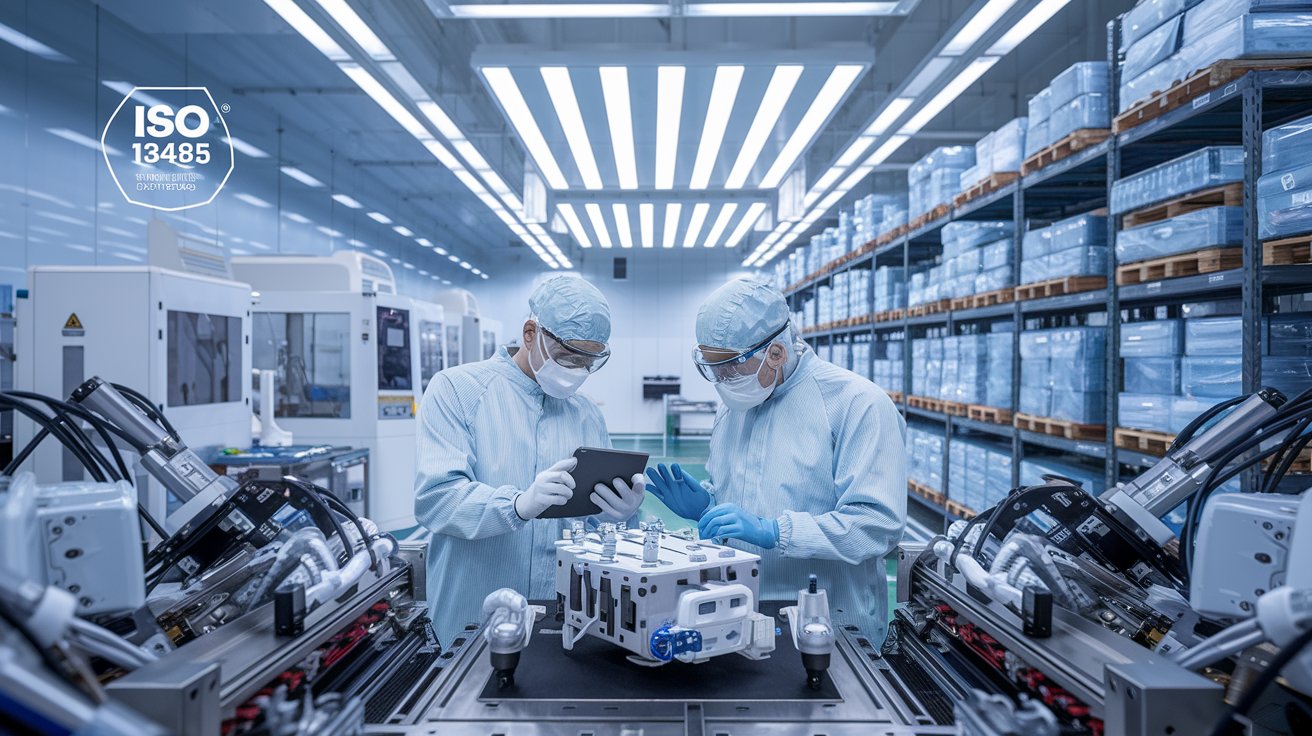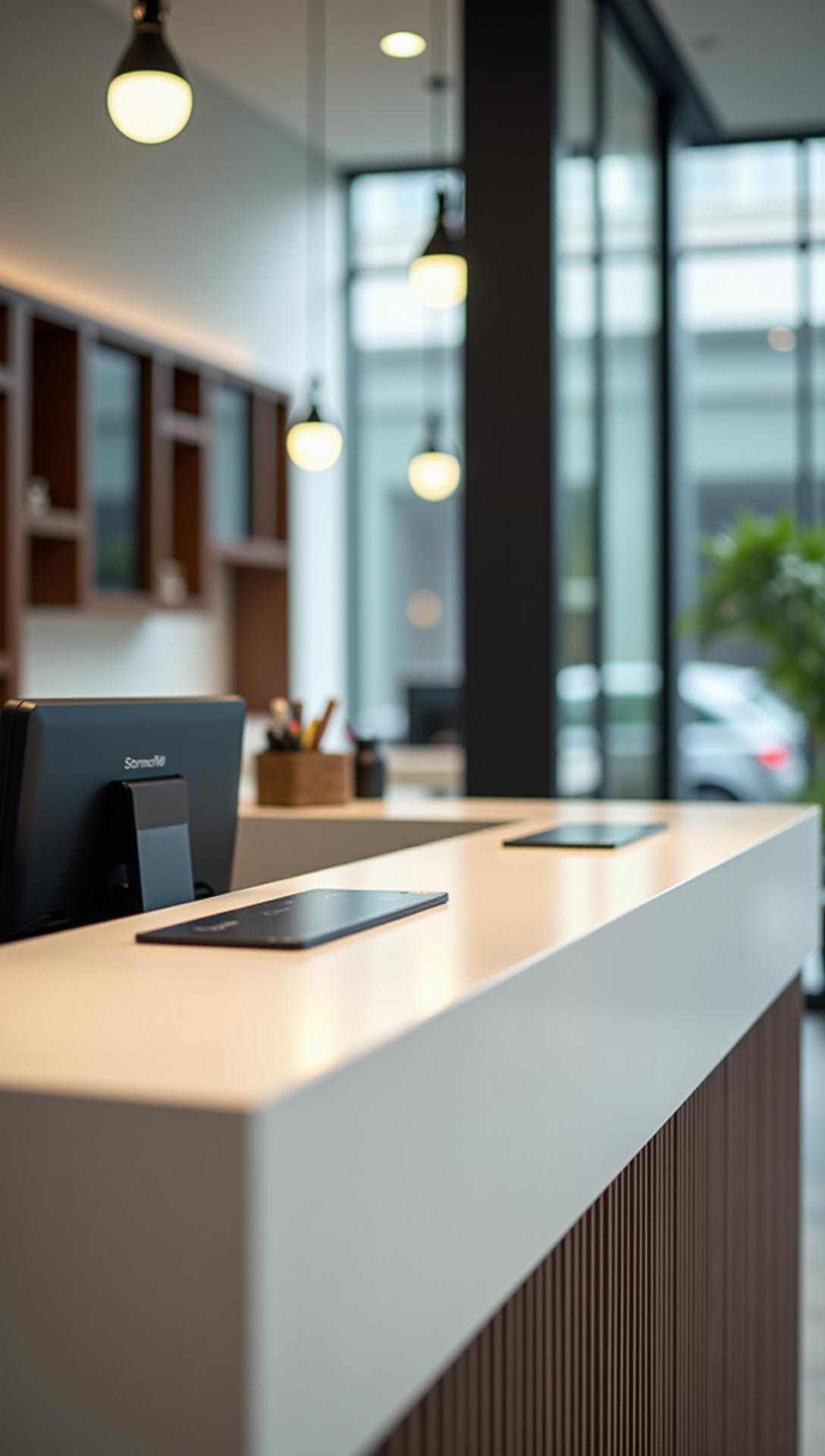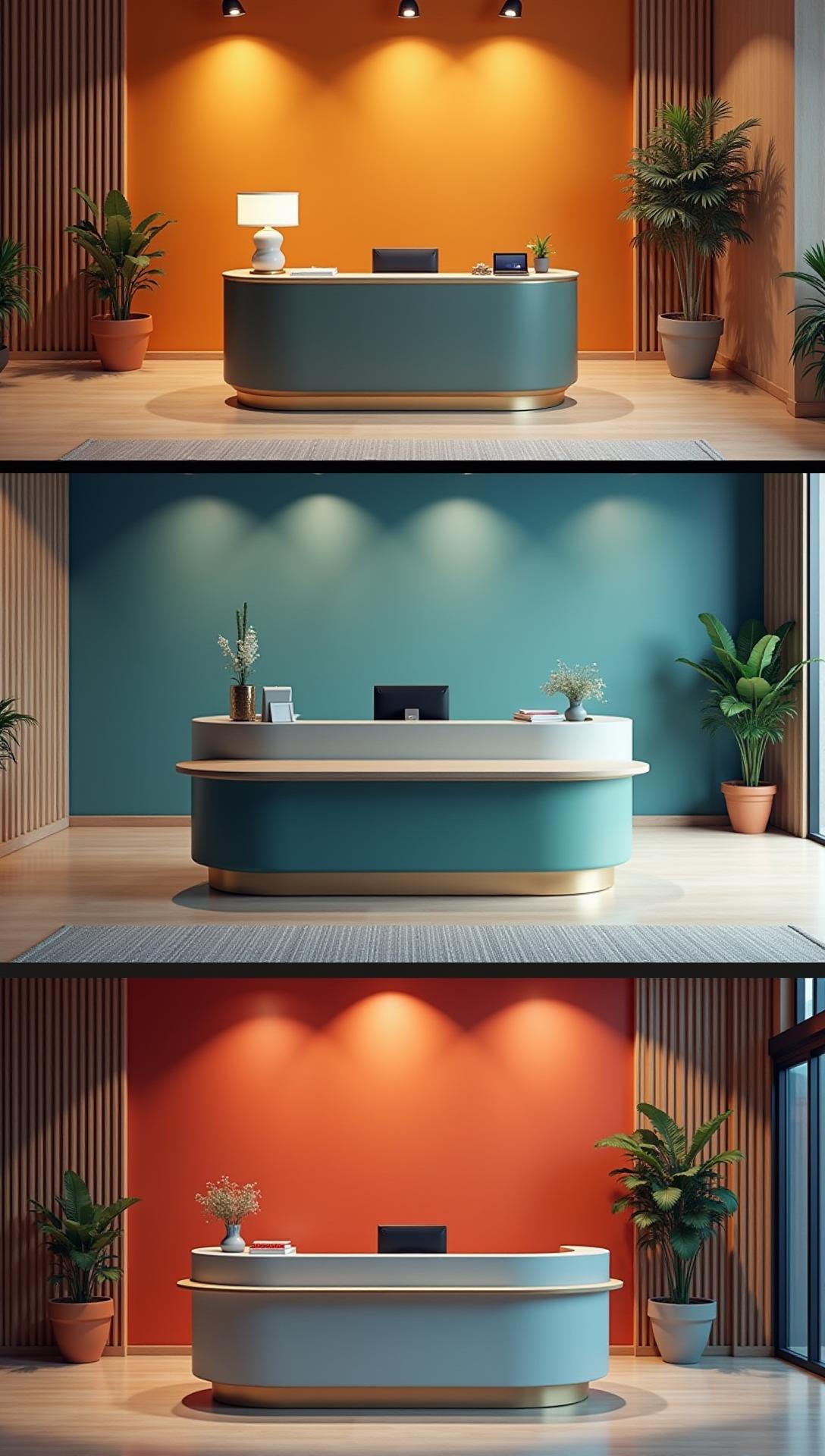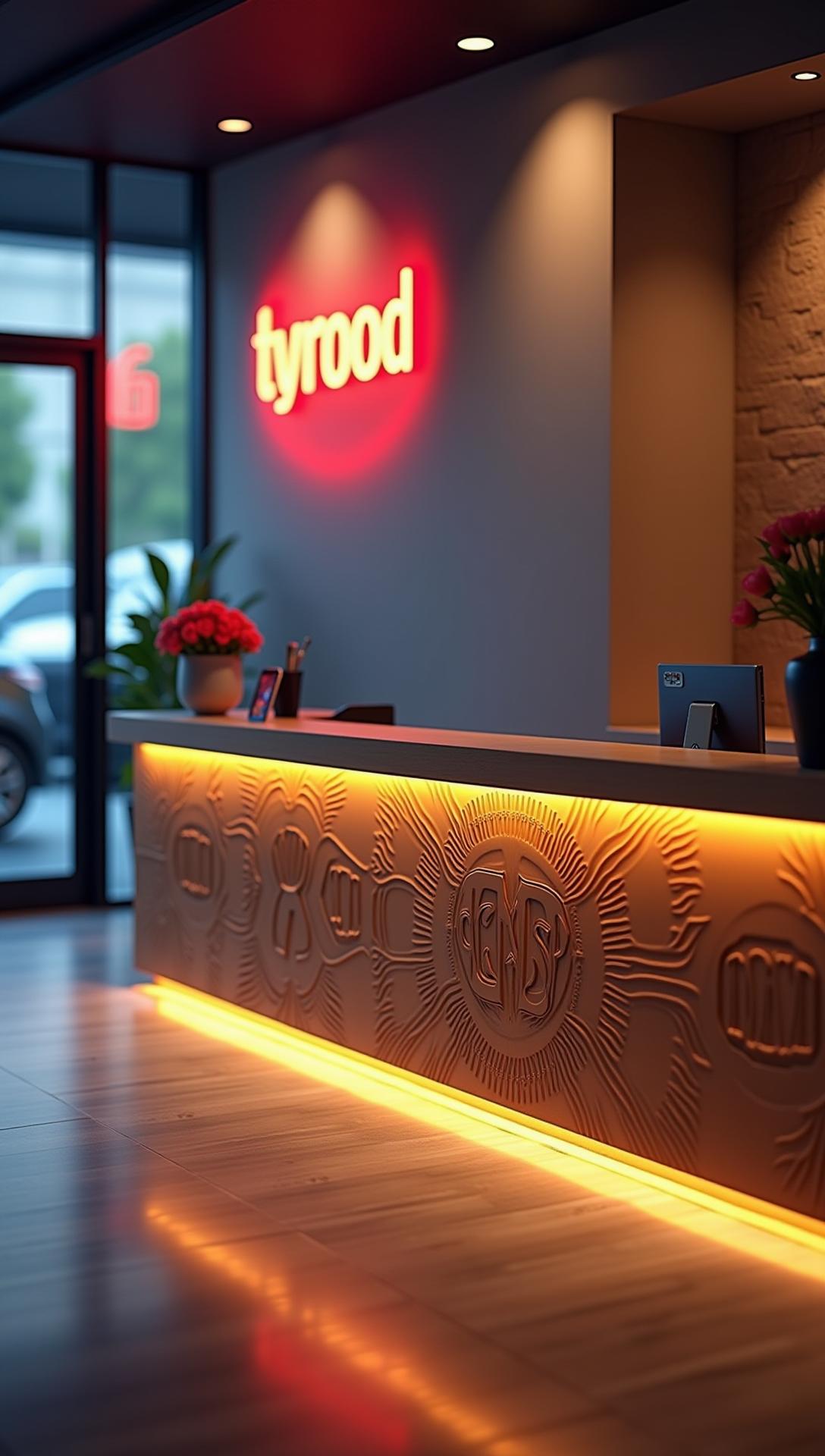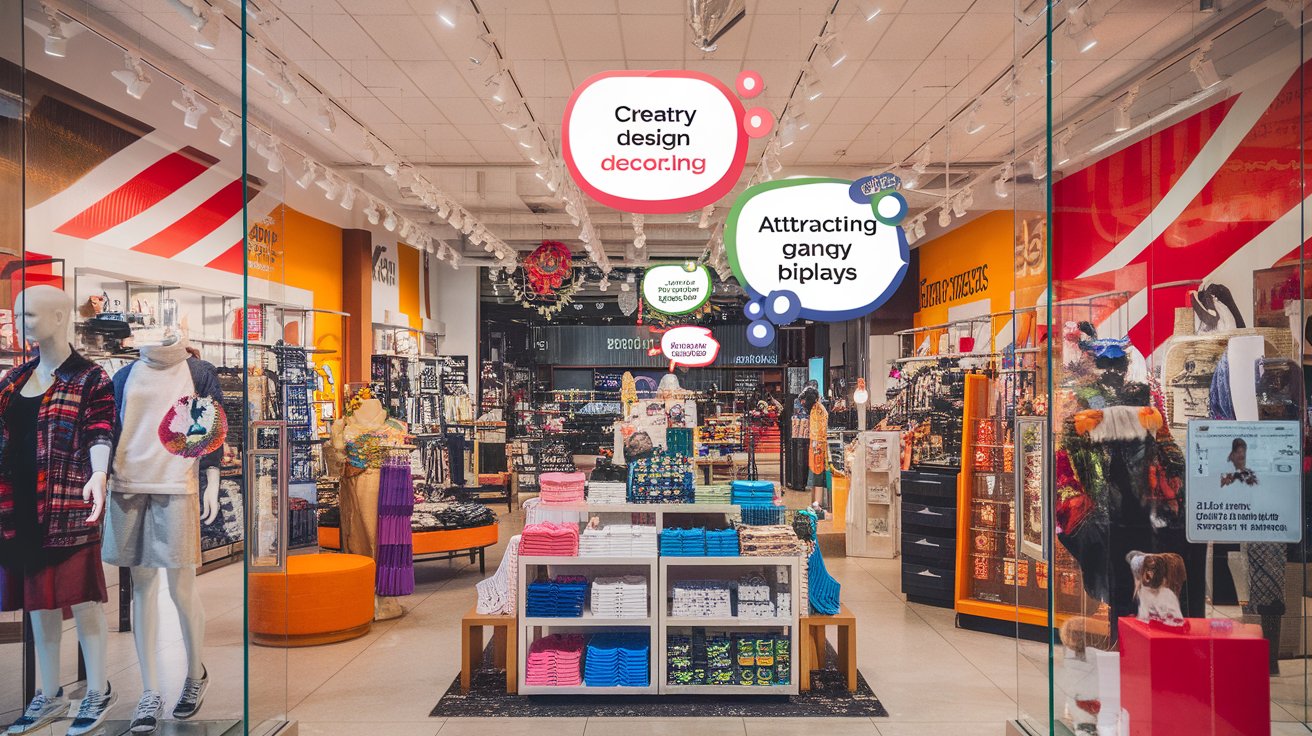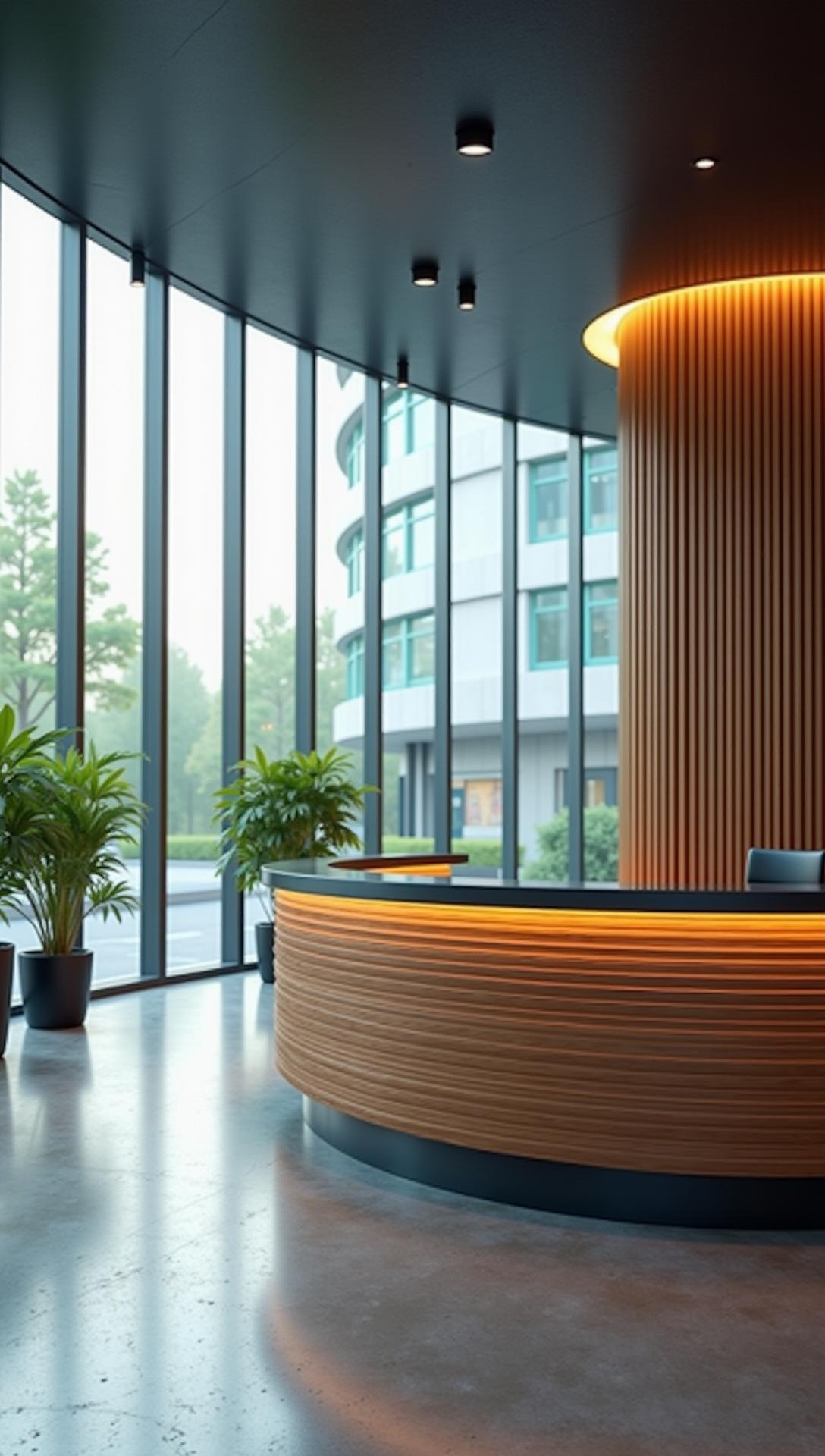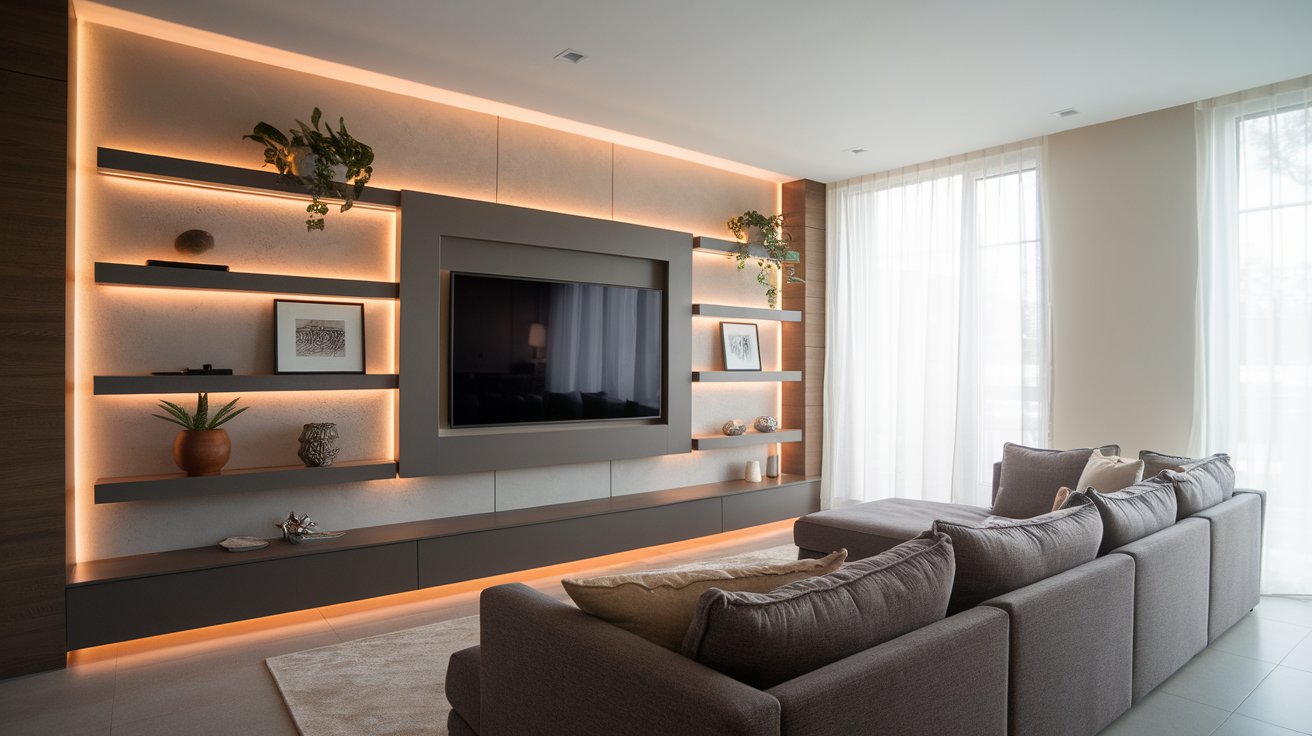Introduction
When you step into a building, the first thing that greets you is often the reception desk. This crucial element sets the tone for the entire space, influencing how visitors perceive a business before they even greet a staff member. The concept of reception desk design has evolved significantly over the years, moving from simple wooden counters to sophisticated, artistic structures that marry functionality with aesthetic appeal. Today’s reception desks provide a welcoming presence while incorporating advanced technology and ergonomic features, reflecting modern design principles and the personality of the brand.
We will explore a variety of reception desk design ideas tailored for contemporary spaces. From sleek minimalist styles to vibrant, artistic forms, there is a wealth of options to suit various business identities, whether you are outfitting a corporate office, a medical facility, or a boutique hotel. Emphasizing both form and function, these designs not only facilitate effective visitor management but also enhance workplace aesthetics, ensuring an engaging first impression.
The Evolution of Reception Desk Design: A Historical Perspective on Functionality and Style
The reception desk has undergone significant transformation throughout history, evolving from a simple table used for administrative tasks to a multifaceted design element that embodies a company’s brand and ethos. The origins of reception desks can be traced back to the mid-20th century when businesses were becoming more customer-centered. Initial designs were often little more than utilitarian spaces, lacking in any sense of style or welcoming ambiance.
In the 1970s and 1980s, the reception desk began to reflect the burgeoning corporate culture. During this period, key design trends, such as modular systems and open floor plans, emerged, moving away from the enclosed offices that characterized earlier workplaces. As companies prioritized a less hierarchical approach, reception areas transformed into inviting spaces where the reception desk became more prominent and stylish.
By the 1990s, advancements in technology influenced the functionality of reception desks. With the rise of computers and digital communication, reception areas incorporated technology, including telephones, fax machines, and later, advanced electronic systems. This period also saw the introduction of ergonomic considerations—designers began to focus on comfort and accessibility for both employees and clients. The modern reception desk started to emerge as not just a workstation but a hub for interaction and communication.
As branding became increasingly vital for businesses, the 2000s ushered in a new wave of design philosophy. Companies began to align reception desk aesthetics with their corporate identity, seeing the reception area as the first point of visual engagement. Reception desks were crafted using high-quality materials such as glass, metal, and sustainable woods, showcasing elegance and modernity.
Modern reception desks feature innovative designs that emphasize sustainability and dual functionality. For example, many contemporary desks are equipped with integrated charging stations and interactive kiosks, enhancing user experience. Furthermore, the introduction of biophilic design principles has led to the integration of natural elements, contributing to a soothing and welcoming environment.
The evolution of reception desk design reflects broader societal shifts, advancements in technology, and changing attitudes toward the workplace environment. From basic administrative surfaces to multifunctional designs that captivate and engage, reception desks continue to play an essential role in shaping first impressions and fostering a welcoming atmosphere for visitors.
Essential Elements of Modern Reception Desks: Key Components of a Contemporary Welcome
Modern reception desks are a fusion of aesthetics, functionality, and technology, embodying the spirit of innovation that shapes contemporary design. The essential elements that characterize these desks contribute to a welcoming environment, making the entryway not just a transition space but a reflection of the business’s ethos. Understanding the key components—materials, shapes, and features—allows businesses to create an effective first impression on visitors.
Materials That Matter
The choice of materials plays a pivotal role in modern reception desk design. High-quality materials such as natural wood, sleek metals, and tempered glass not only enhance visual appeal but also convey a sense of durability and professionalism. Natural wood brings warmth and an organic touch, making spaces feel inviting, while metals and glass can lend a sophisticated, clean look. Recycled or eco-friendly materials are also gaining popularity, resonating with environmentally conscious consumers and enhancing the brand’s image.
Shapes That Define Space
Beyond materials, the shape of the reception desk significantly influences spatial dynamics. Traditional rectangular desks are evolving into more fluid, organic forms, such as curved or asymmetrical designs. These non-linear shapes can create a more relaxed atmosphere, promoting openness and engagement. Rounded edges and flowing lines break the rigidity often associated with corporate environments, inviting guests to approach comfortably and interact seamlessly with reception staff.
Features for Functionality and Comfort
Modern reception desks incorporate various features aimed at enhancing functionality and guest experience. Technology integration is paramount; desks equipped with built-in charging stations, touch screens, or information kiosks cater to the needs of today’s tech-savvy visitors. Moreover, thoughtful design elements such as adjustable heights ensure the comfort of receptionists while maintaining an aesthetically pleasing appearance. For enhanced guest interaction, accessibility features such as clear signage and welcoming lighting are crucial for a fluid transition into the space.
These essential elements work harmoniously to create a reception environment that is both modern and welcoming. By selecting appropriate materials, shapes, and features, businesses can transform their entryways into zones that resonate with visitors, thus setting a positive tone for their experience. The focus should always be on fostering a friendly atmosphere that reflects the brand’s values and commitment to customer satisfaction.
Designing for Different Business Types: Reception Desk Design for Various Industries
Reception Desk Variability Across Industries
The design of a reception desk can greatly influence the first impression a visitor has when entering an establishment. Different industries require tailored approaches to reception desk design to meet the unique needs of their clientele and brand identity. For instance, the corporate sector often favors sleek, minimalist designs that convey professionalism and efficiency. A modern corporate reception desk may utilize high-quality materials such as glass or polished wood, featuring clean lines and an uncluttered workspace to project a sense of order and reliability.
Healthcare environments demand a different approach, focusing on comfort and accessibility. Reception desks in hospitals or clinics are typically designed to accommodate patients of diverse backgrounds and physical capabilities. These desks often include ergonomic features, such as adjustable heights and rounded corners to ensure safety. The aesthetic may lean towards calming colors and natural materials, evoking a sense of warmth and comfort, which is crucial in reducing anxiety for patients.
Hospitality and Creative Spaces
Hospitality industries, including hotels and resorts, benefit from reception desk designs that are inviting and reflective of the brand’s character. Here, the use of bold colors, artistic shapes, and unique materials can create an inviting atmosphere. Desks may also incorporate decorative features—like live plants or artistic displays—crafted to personalize the guest experience. The design should enhance the overall ambiance of the lobby rather than stand out as a separate entity.
In coworking spaces and creative industries, reception desks can serve as hubs of innovation and collaboration. These designs often blend functionality with vibrant, inspiring elements, such as adjustable work surfaces that accommodate interaction. Materials might include reclaimed wood or vibrant colors that foster creativity and dialogue. Open designs encourage movement and networking, aligning with the ethos of collaboration prevalent in these environments.
By recognizing the varying needs of different sectors, designers can create reception desks that serve not only as functional furnishings but also as integral components of the business’s identity. Each desk can ultimately manage to project the core values of the industry it represents, instilling confidence and welcoming visitors in a manner that’s both aesthetic and practical. As we transition to the next chapter, we will explore how to integrate a company’s brand identity into reception desk design, including crucial elements such as color schemes and logo placement.
Incorporating Branding into Design: Elevate Your Reception Area with Identity
Infusing Brand Identity into Your Reception Desk Design
When clients or customers enter a space, the reception desk serves as not just a functional element but also as a vital touchpoint reflecting a company’s brand identity. A thoughtfully designed reception area can communicate volumes about the company’s philosophy, values, and aesthetics. Incorporating branding into reception desk design is essential for creating that first impression, and there are various components to consider in achieving a cohesive look.
Color schemes play a significant role in integrating brand identity. The palette you choose should resonate with your company’s existing colors and evoke the desired emotional responses. For instance, a health care facility might opt for calm blues or greens to evoke a sense of peace and trust, while a tech startup might choose bright, energetic colors that speak to innovation and creativity. When selecting colors for the reception area, it’s crucial to maintain a balance that respects the brand’s voice while ensuring the space remains inviting.
Logo placement is another powerful tool in reinforcing brand identity at the reception desk. Consider integrating the company logo into the design of the desk itself. Whether it’s a sleek, illuminated sign above the desk or an engraved version on the surface, strategic placement can draw the eye and anchor the brand in the visitor’s mind. Additionally, ensure that logo visibility does not disrupt the desk’s overall aesthetic. Incorporating the logo into a custom partition, for instance, can create a visual separation while still keeping the brand at the forefront.
The overall style and materials of the desk should also align with the brand’s message. For a luxury brand, premium materials like marble or rich woods convey sophistication and exclusivity, while a contemporary brand might prefer a minimalist design with metals and glass for a clean, innovative look. Ensuring that the reception desk is designed in a way that complements surrounding furniture and décor pieces can reinforce the brand’s narrative throughout the space.
Consider adding branding elements with subtle touches, such as custom artwork or branded promotional materials. These components can enhance the visitor experience and create a more immersive environment that aligns with the brand’s values and mission. By carefully integrating branding into the reception desk design, you not only create a welcoming space for clients but also establish a strong, memorable brand presence right from the start.
Creating an Engaging Visitor Experience: The Role of Reception Desk Design
The reception desk serves as the face of any organization, significantly influencing the initial impression visitors receive. A thoughtfully designed reception area creates an inviting atmosphere that not only welcomes guests but also establishes a positive tone for the entire visit. When considering reception desk designs, a focus on layout, accessibility, and ambiance can greatly enhance the overall visitor experience.
Layout Considerations for Enhanced Visitor Interaction
An effective reception desk layout should facilitate smooth traffic flow and ease of access. Positioning the desk at an angle or creating a semi-circular reception area encourages direct engagement with visitors, allowing staff to greet them promptly. Designing the desk to be at a comfortable height for standing and seated visitors helps bridge the gap between the receptionist and visitors. Open designs without physical barriers promote visual connections and enhance communication, making guests feel more welcome and valued.
Having a clear pathway leading to the desk reduces clutter and provides a straightforward route for guests, further enhancing the welcoming atmosphere. Incorporating seating areas nearby can also provide comfort for waiting visitors, creating a space that feels less transactional and more inviting.
Accessibility and Inclusivity: Key Design Principles
Accessibility should be a top priority in reception desk design. This involves catering to all visitors, including those with disabilities. Designing desks with lower front sections allows wheelchair users to interact comfortably with receptionists. Incorporating assistive technology, such as hearing loops or visual aids, ensures that every visitor can receive the assistance they need. While aesthetics are essential, prioritizing functionality and inclusivity will create a more engaging experience for everyone.
Consider the movement of individuals within the reception space. Ample space between furniture allows for easy navigation, particularly for guests with mobility aids. Providing ample lighting and utilizing color contrasts can further facilitate wayfinding, contributing to a stress-free environment.
The ambiance surrounding the reception desk plays an instrumental role in shaping the visitor experience. Thoughtful choices in color schemes, lighting, and decor can evoke feelings of warmth and professionalism. Soft, natural lighting combined with calming colors not only enhances the design but also contributes to a more relaxing environment. Together, these elements ensure that the reception area is not merely a checkpoint but a memorable part of the visitor’s journey, fostering lasting impressions.
Future Trends in Reception Desk Design: Sustainable and Adaptable Spaces
Innovative Materials and Sustainability
The future of reception desk design is leaning heavily towards sustainability. Modern businesses are increasingly conscious of their environmental footprint, prompting designers to use sustainable materials in their projects. Reclaimed wood, recycled metals, and eco-friendly finishes are becoming standards in new builds. Not only do these materials help reduce waste, but they also tell a compelling story about a company’s commitment to sustainability. Designers are integrating biophilic elements, such as living green walls or plant installations beside reception desks, which contribute to air quality and foster a calming atmosphere for visitors. This approach not only enhances the visual appeal of the entryway but also fosters a connection with nature, making the space more inviting.
Smart Desks and Technology Integration
Advancements in technology are significantly influencing reception desk design. One prominent trend is the emergence of smart desks equipped with integrated technology that streamlines operations. These desks can incorporate touchless check-in systems, digital displays for branding and communication, and even artificial intelligence-driven chatbots to assist visitors upon arrival. Such features enhance the efficiency of the reception staff, allowing them to focus on personalized guest interactions rather than administrative tasks.
The integration of smart systems can facilitate data collection, providing insights into visitor traffic and preferences. This technological evolution ensures that reception areas can keep pace with the demands of modern businesses while offering an enhanced visitor experience.
Adaptability: Designing for Flexibility
As work environments continue to evolve, there’s a growing demand for adaptable reception desk designs. Companies are recognizing the need for spaces that can be easily reconfigured to accommodate different functions and visitor volumes. Modular reception desks or mobile elements allow for quick changes to layout and function, addressing the dynamic nature of today’s workplaces. For instance, when hosting large events, the desk can be expanded and reconfigured to handle increased foot traffic, while during quieter periods, it can be compacted to create a more intimate setting. This level of adaptability not only maximizes the utilization of space but also aligns with the overarching goal of creating a warm and engaging welcome for every visitor.
Conclusions
The reception desk is much more than just a functional piece of furniture; it is a reflection of the company’s culture and professionalism. Through innovative design approaches, businesses can create reception areas that not only serve their purpose but also resonate with clients, partners, and employees alike. From the choice of materials to the layout of the space, every element plays a role in crafting a warm and welcoming atmosphere.
By incorporating modern design ideas into your reception desk, you can transform the entryway to your business into a memorable and engaging space. This approach will not only impress visitors but also foster a sense of belonging and professionalism, demonstrating that you care about their experience. As trends continue to shift, staying updated with the latest in reception desk design will ensure your space remains inviting and reflective of your brand’s values.

